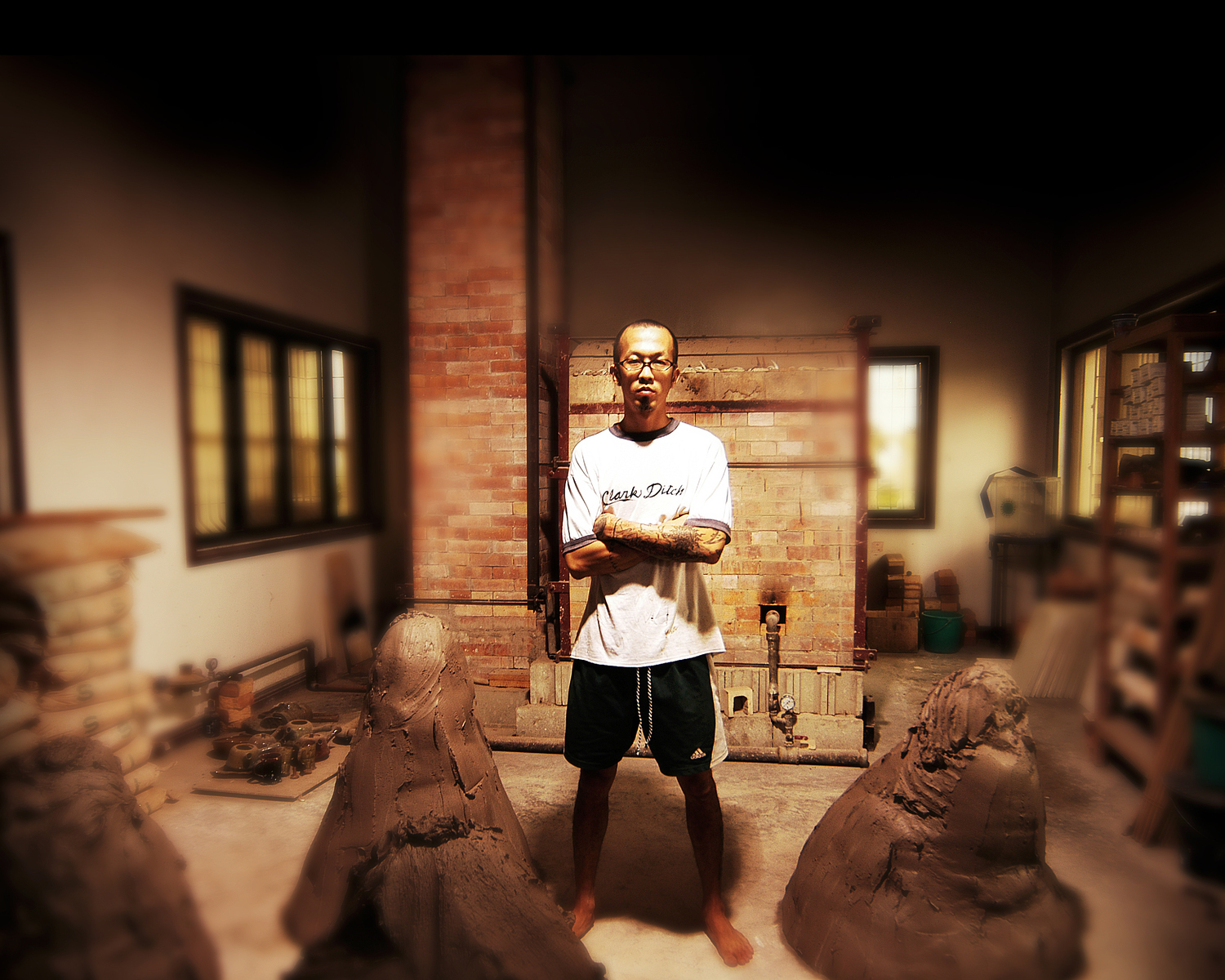"Hit the pot" Real Living magazine June 2004 by Apol Lejano
A piece of pottery with a wide crack in two places used to serve rice on my dining table. It was a real conversation piece, and not because diners would grind their teeth on broken-off bits of bowl. The imperfections were all part of the design. After potter Hadrian Mendoza had shaped the item into a medium-sized half sphere with smooth sides, he had made the slits, before finishing off with a glaze of gray and white.
Maybe it was tempting fate, for the dinner party came that a clumsy guest decided that the cracks were not enough, and the rice bowl ended up in the trash. So when last February Hadrian exhibited pieces at Mag:net Gallery in Makati, with two other potters in the show called "Centering," off I went to have a look.
No cracks, breaks, and stabs this time, as had been this particular potter's style in previous years. Now the pieces are more controlled and fluid, more traditional, actually. Ask Hadrian and he will tell you that this is him taking his craft more seriously. No more room for error now; a miscalculation cannot be remedied by a touch of deconstruction. You'll be informed that it has to do with turning 30, which he did a few months back. "Now is the time to start going for your goals," he says, "to push yourself past your limits."
We have to watch this guy , then, if in the coming years he intends to go for it more then he has in the past. It's been 10 years since he took a short course on pottery and gotten hooked on it. So despite the business degree earned from Mary Washington College in Virginia, U.S., Hadrian decided not to enter the corporate world, but rather get jobs at pottery studios to learn more of the craft. "My main goal was to work, work, work." So manic he was that he even exhausted teachers at the Corcoran School of Arts, where for a year and a half he was a part-time student. "They told me that it was time to move on," he says. "I was putting a big dent on supplies, using a lot of clay all over the place. I was always in the studio and my pots where everywhere."
Local pottery Jon Pettyjohn was not turned off when, in 1997, Hadrian came to the Philippines for a year to work as his apprentice. In 1999, with Hadrian back in the States, he got a call from Pettyjohn, asking if he was interested in working together. Shortly after, the Pettyjohn-Mendoza School of Pottery was born.
For the past years now, in their space in Greenbelt, Makati, students have been learning to work with clay. It is only when you handle he material yourself do you realize that making a bowl is not an easy thing. First comes wedging, where with your two hands performing twisting and breaking-off motions you handle a ball of clay, aiming to get an even consistency. Then comes centering, a tricky process that requires your hands to position the clay exactly right, aligning the particles of earth just so, while a foot turns madly to get the kick wheel going. You push into the middle of the lump of clay now, opening and making smooth what will be the bottom of the bowl. Your foot still moves. After this, raise the clay to form sides, shaping as you go along.
When you're satisfied with the form, the work is still not done.. There is the trimming of the base, the application of glaze, and the firing. All the steps require hours of practice to perfect. You need reach only the middle part, sighing with relief that the sides of your bowl did not separate clear off its base, to realize that this is a serious craft. A potter cannot be lazy.
Hadrian has ideas playing in his head, some new, others taking off from stuff he's done in the past. "Never let yourself be satisfied with what you do," he proclaims. "There's always a quick satisfaction in something- a new color, a new form- but you shouldn't dwell on it too long," Advice well taken; time to stop thinking about cracked rice bowls then.
